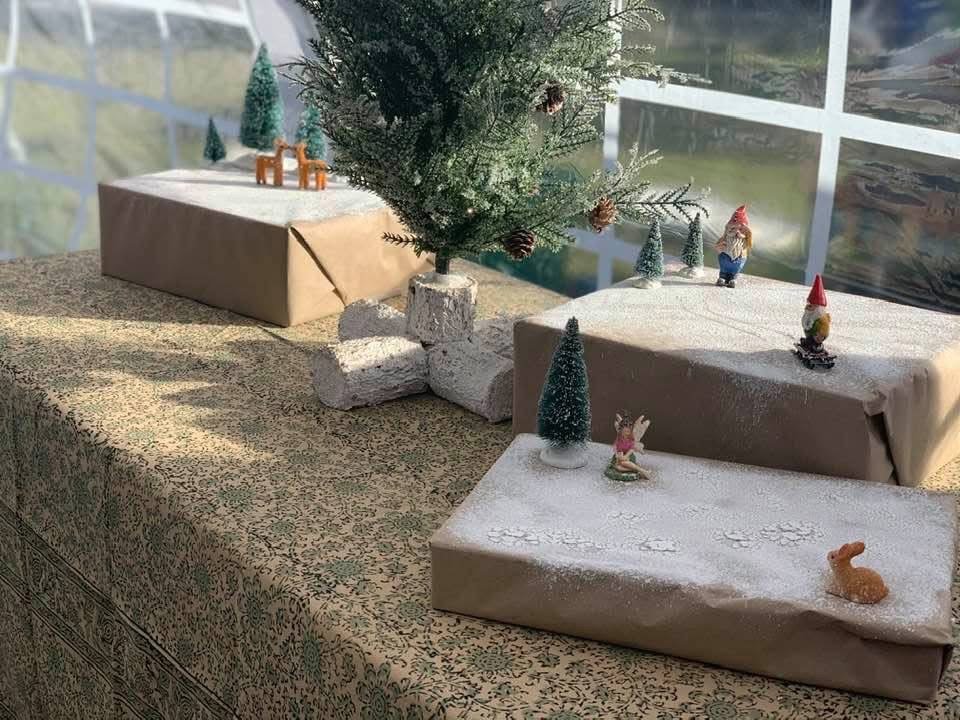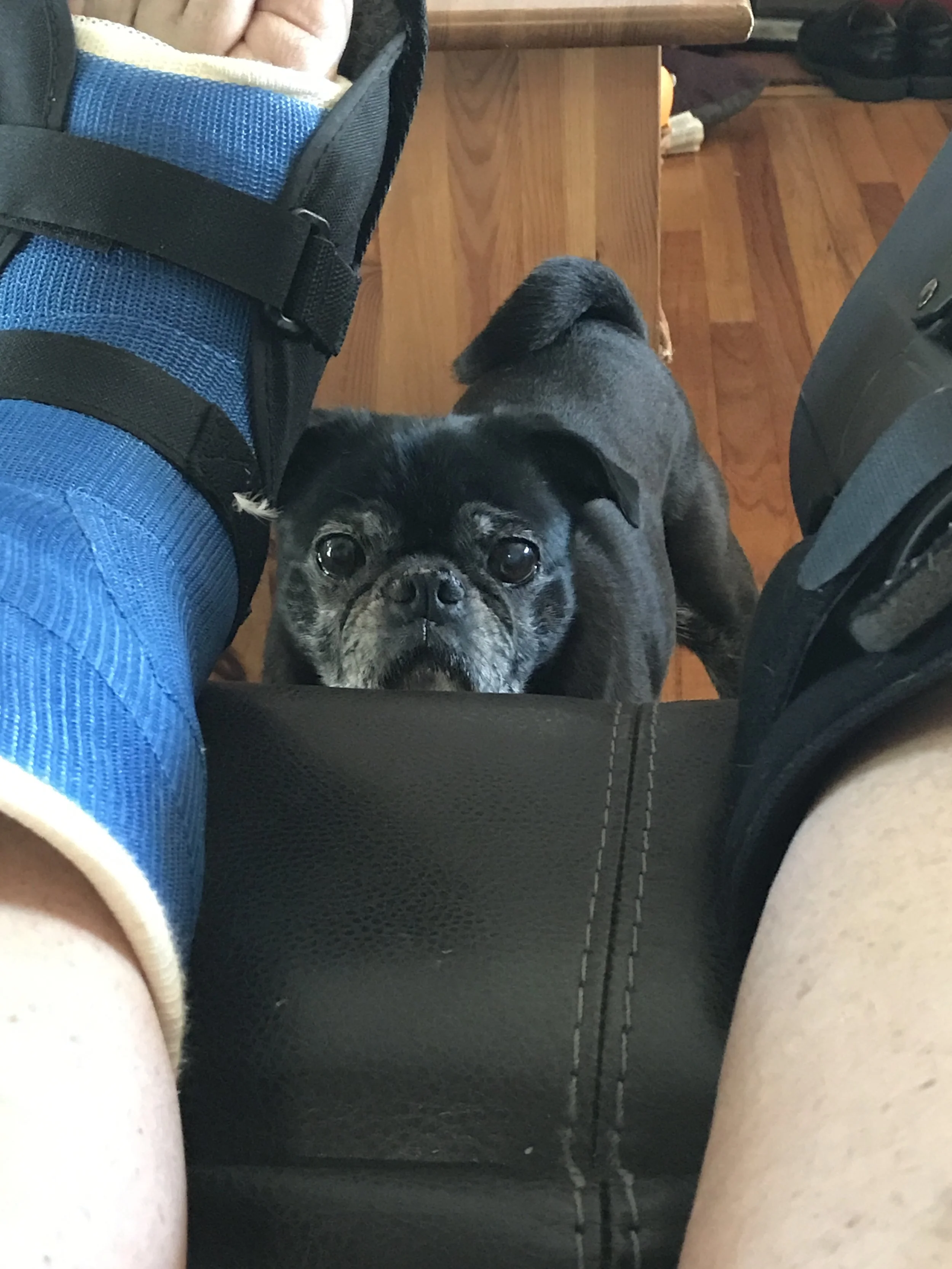FA LA LA… IT’S A LA LA LOT.
/I don’t want Mrs. Claus to feel dissed, but I do a great job at making my little house look like a holiday wonderland. Well, as much as it can in Southern California when it averages a cool 75 degrees on Christmas.
I know most families have that one tradition keeper. The one that makes sure traditions are set and then followed and expanded as time goes on. Sometimes, we can make ourselves and those around us go a little bonkers as we see to every detail of the holiday season. What is a great quality can also become a bit of a hurdle.
When Jimmy was first living with his diagnosis, I really leaned into making the holidays spectacular. I look back and remember thinking, “What if this is our last Christmas all together?” I wanted to create the best moments for my kids and my extended family. I wanted Jimmy to feel extra loved and special… Just in case we didn’t get another holiday season together. It is hard not to have those thoughts. It does make us live more intentionally and let go of things that don’t matter. It also motivates us to push through exhaustion and spend extra time and money to see to it that the things that we hold value to are done well. If I am honest, I was a bit overwhelming! Picture even poor Rudolph turning off his nose and hiding behind the barn from me. I wanted it done up around here! We can cook, clean, decorate, shop, and wrap gifts long into the night for our families. Guess what? There is nothing more valuable than feeling safe, happy and full of magical thoughts and being with those you love on a holiday!
When we are planning and managing the holiday season and living with or caring for someone with neuroendocrine cancer everything becomes a little more meaningful, but ALSO more difficult to do. HO HO HOly moly it can be a lot! I learned that after many years of kicking into gear and hosting the Christmas Eve Dinner at our house for the whole family, that the celebration had to be modified. I could not pull all of that off without Jimmy’s help. Due to his health, he needed to scale back his Santa workshop of decorating. He usually went all out decorating the front of the house. We had a 20-foot Christmas tree with a heart as the topper (for me). He made a snowman out of rebar and lined the walk with candy canes. The roof looked like a message for anyone living in space. (I can hear the astronauts now, “Houston, WE HAVE a problem…we need sunglasses!”) As our kids grew, we would enlist them to help. That was…well… It was eye-opening. AfterI dragged us all to the park or the beach for a photo for the perfect holiday card, it was home to help dad on the roof or help remember where the hole in the front lawn for the giant metal pole for the Christmas tree was (I never heard laughing during this exercise). We maybe looked a little weird out there crawling around and poking on the grass, lol. But! The 20 plus high rebar tree with hundreds of lights on it meant happiness to us, and if I am honest, to me. It was tradition. You know what else it was? A pain in the tuchus!
When my kids started helping, the first few years felt fun. They got to go on the roof for the first time. They got to mess around with electricity. All the usual no-no’s! Eventually the novelty wore off and it became a chore. Seeing how much time and effort went in behind the scenes, they started telling us what they didn’t mind not having for the holidays, but more importantly, they showed us what the magic of the holidays was for them.
It was no longer safe for Jimmy to jump on ladders or carry heavy things. The kids knew that he loved that stuff. Not being able to do it was a bummer for him. The fun was doing it with their dad. The year that we scaled back and didn’t put up the big white tent in the yard for our big family dinner or the giant tree in the front yard, we were all a bit sad, but it also unleashed a kind of relief. We didn’t hustle and bustle. We had time to spend together. We learned that a dinner of any kind with our family was what held the value of the tradition. The cracker toys that held silly hats and a joke were a must. The sparkling cider and the hot cider with cinnamon sticks? Don’t skimp on that. The music, the laughter and complete break from thinking about Jimmy’s health were magic. These were the real holiday miracles that we not only wanted, but needed. We didn’t need the BIG. We needed the small details of love, of family, of peace. I felt that maybe I was letting everyone down by not holding up the entire holiday on my shoulders. I soon found out that I was a silly Christmas goose. Nobody minded the less than normal holiday extravaganza.
Being a caregiver is a true gift to the family. Knowing our loved ones are cared for and maybe rocking a holiday sweater for an extra touch of cheer is all we need. The family loves you, not the meals that take three days to prepare. To see you having time to enjoy their company and hopefully give you a break to sit and chat is their joy. If you are the one with NET cancer, it may be just what the doctor ordered for you to receive that little box of your favorite chocolate or a handwritten card from your friend. Sometimes, it is okay to let those around you show up. You can just be.
I am looking forward to a sweet and quiet holiday season this year. I am setting up the front room of the house as a little holiday dream. Instead of putting up 42 lit candy canes down the driveway, I will be snuggled in with my dog, Chewi, reading a book about some holiday fiasco! Instead of being the house that everyone drives by to see, Chewi and I will be driving around town looking at lights while listening to the tunes of the season. Not to worry, I will go all out with a few traditions and make sure we have comfort, joy and a whole lot of hot apple cider on the stove. I will not be buying so many gifts but what I do give will be wrapped with lots of jolly.
If you are spending time with your family and are figuring out how to get it all done this year, your health and that of those you love can be the first thing on your list, the rest will come naturally when you follow your traditions in a small but meaningful way. Life changes and as it does, we must adapt and find our joy. Remember to be present and to be ready to say I love you every chance you get! The holidays give us an opportunity to do just that. I hope that even if this holiday season requires a trip to the hospital for treatment, or extra days inside, you find a way to hold onto the most important thing. That is each other.
This time of year can feel polarizing to your “limits” due to neuroendocrine cancer. Please remember to grab ahold of the kindness and good wishes all around you. Starting from me! I wish you all a wonderful holiday season of celebrations and joy.















